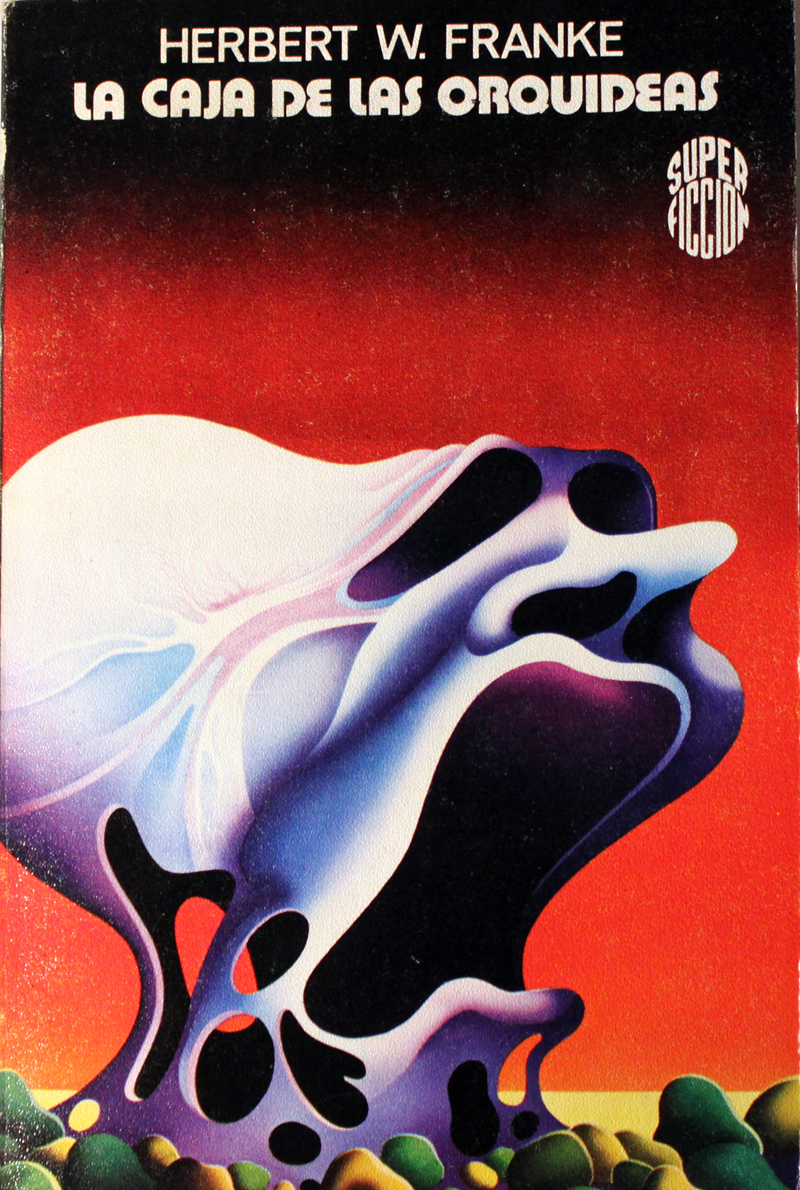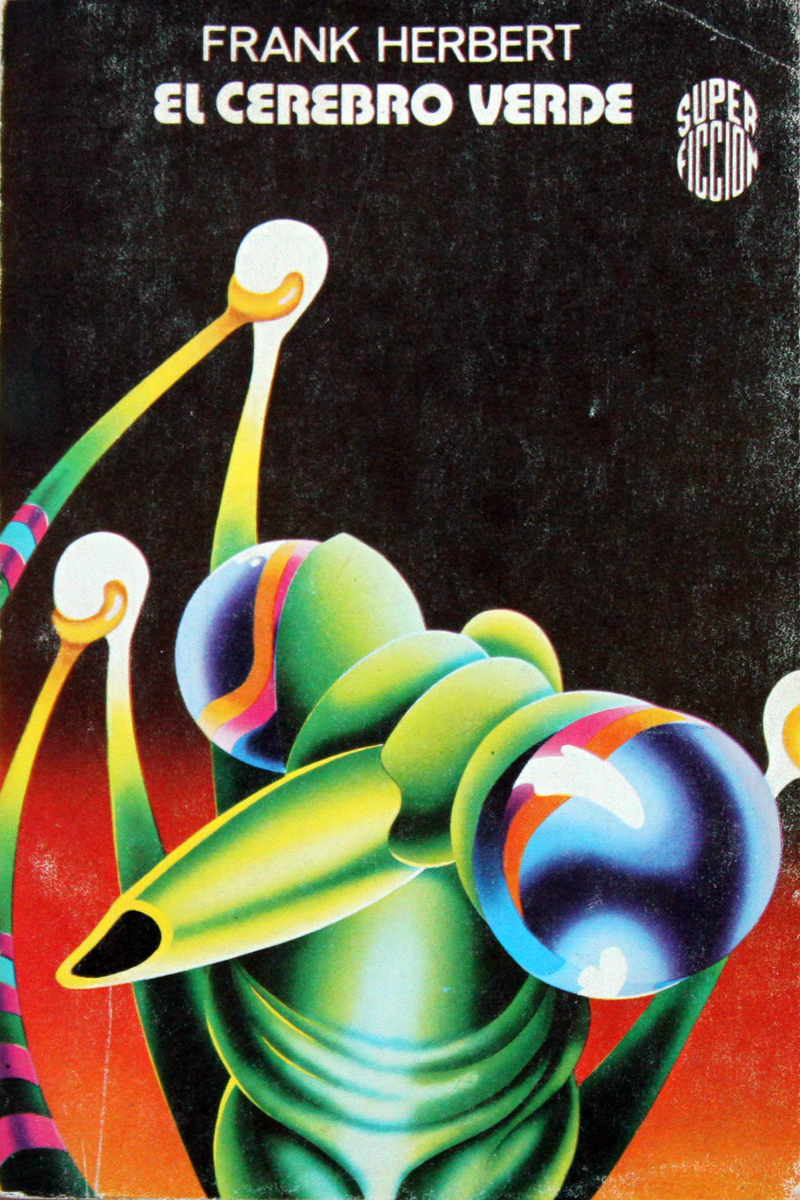 "Downward to the Earth" by Robert Silverberg, 1981
"Downward to the Earth" by Robert Silverberg, 1981
 "The Orchid Cage" by Herbert W. Franke, 1978
"The Orchid Cage" by Herbert W. Franke, 1978
 The Best of Stanley G. Weinbaum, 1977
The Best of Stanley G. Weinbaum, 1977
 "Brainrack" by Gerry Davis/Kit Pedler, 1976
"Brainrack" by Gerry Davis/Kit Pedler, 1976
 "Desert of Fog and Ashes" by Joan Trigo, 1978
"Desert of Fog and Ashes" by Joan Trigo, 1978
 The Best from Fantasy and Science Fiction, 25th Anniversary Anthology, 1976
The Best from Fantasy and Science Fiction, 25th Anniversary Anthology, 1976
 "The Green Brain" by Frank Herbert, 1978
"The Green Brain" by Frank Herbert, 1978
 "The I. Q. Merchant" by John Boyd, 1977
"The I. Q. Merchant" by John Boyd, 1977
 "Our Children's Children" by Clifford D. Simak, 1976
"Our Children's Children" by Clifford D. Simak, 1976
 "Before the Golden Age" Isaac Asimov, 1976
"Before the Golden Age" Isaac Asimov, 1976
"In 1976, the year after the death of Spanish military dictator Francisco Franco, Barcelona publisher Ediciones Martínez Roca launched its Colección "Super Ficción series—an eclectic collection of science fiction novels—with Los Hijos de Nuestros Hijos, a Spanish translation of Clifford Simak’s Our Children’s Children. Los Hijos de Nuestros Hijos and the titles that initially followed it featured cover art created for UK publisher Penguin’s science fiction series. They were the work of David Pelham, who was then Penguin’s art director, as well as the artist behind many of the company’s most memorable covers (one of the best-known being Penguin’s 1972 re-release of Anthony Burgess’s A Clockwork Orange). ""While in the process of commissioning German surrealist "Konrad Klapheck to provide covers for 1974 reissues of several of J.G. Ballard’s early novels, Pelham took it upon himself, at Ballard’s urging, to realize some of the ideas himself, and it was these that Penguin ended up using.
For the cover of its edition of Jack Williamson’s The Legion of Space, the ninth release in the series, Ediciones Martínez Roca turned to artist Horacio Salinas Blanch. Over the following decade, Salinas Blanch would produce dozens of covers for Colección "Super Ficción". Although his illustration for La Legión del Espacio was relatively restrained, Salinas Blanch’s work—presumably under the instructions of the publishers—took as its template the airbrushed aesthetic of "Pelham’s Ballard covers, where odd juxtapositions of forms rendered with eerie smoothness hovered in isolation against brooding backgrounds. Salinas Blanch, though, approached the concept through his own otherworldly, idiosyncratic lens: pop culture reimagined as art, reimagined once again as pop culture, a circular transformation of which it seems reasonable to presume Ballard would have approved. Salinas Blanch’s" mixture of airbrushed unreality, pop-art surrealism, and lunatic dreamscapes reads like some crazed cocktail of Pelham and the other artists of the day who were working in a similar visual idiom—names like Peter Haars, Peter Tybus, Heinz Edelmann, Peter Lloyd, Bob Pepper, and Alan Aldridge.
No slouch at an inspired rip-off (see his take on Pelham’s cover for Fred Hoyle’s October the First Is Too Late, which Ediciones Martínez Rocahad already used for its cover of a collection of Robert Heinlein’s Lazarus Long stories), Salinas Blanch was not above directly cannibalizing his inspirations, as in this cover art for 1978’s Del Triunfo a la Derrota by Spanish anarchist journalist Jacinto Toryho, where he recycles "Pelham’s Big Boy from the cover of The Terminal Beach, adding a series of powerful details—the low light source, long shadows, and target on the ground. Salinas" Blanch’s other work included cover art for the Spanish translation of Mary Lee Dunn and John Maguire’s book on the Jonestown mass suicide, Hold Hands and Die!, where he offered up a compellingly dreamlike revisitation of an image as famous as it is awful.
Cynical plagiarist, pragmatic jobbing scribbler, or a genuine visionary? It’s hard to say—practically no information about Horacio Salinas Blanch is to be found outside of his corpus of work: his covers, which inhabit the happy intersection of crowd-pleasing commercial interest and fine art inspiration passed through many hands as in a game of telephone, creating something at once known and strange, like some shared archetypal folk memory.
It’s one of the great truisms and paradoxes that it’s occasionally imitation—especially imitation of the crassest, most commercially-driven type—that highlights the essence of what makes something engaging, either by contrasting it with an inferior copy or, as in the case of Horacio Salinas Blanch, by reiterating and mutating the source material until a perfect synthesis of what makes it strange and beautiful has been achieved—and until the imitation itself has become something strange and beautiful too." - quote taken from an excellent article on the artist with additional artworks at We Are The Mutants.

No comments:
Post a Comment